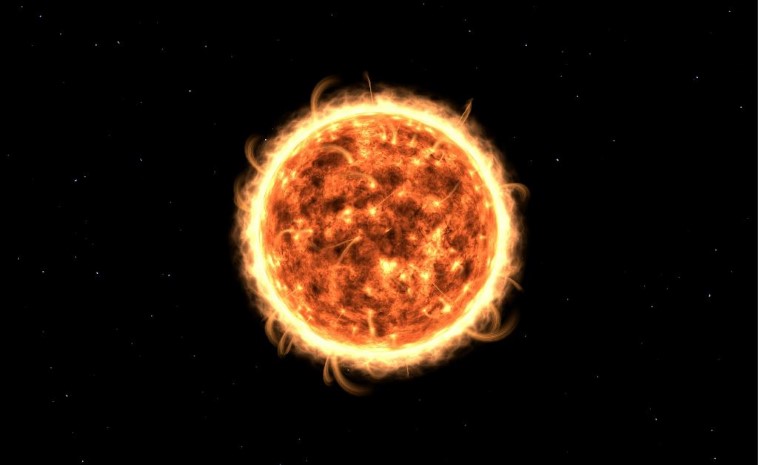The Sun’s predicted destiny in the next few billion years

The Sun that means life to us, which we thank for our existence, perhaps the only one in the entire universe, that exact same Sun is on its way to burn and thus destroy us, totally.
Okay, that’s a long-known fact, but let’s repeat it briefly: the destiny of the Sun is to shine stronger and stronger (today it radiates 30% more than four billion years ago), so that in its late age, i.e. in five billion years, it becomes a red giant and swallows Mercury, Venus, and perhaps the Earth itself. Then it will be a hundred times bigger than it is now.
But even if our planet avoids the fate of being swallowed up, it won’t mean anything to anyone because life on the planet will disappear much earlier. Already in a billion, at most a billion and a half years, the Earth will be so hot that all more complex living organisms will disappear.
Then the oceans will evaporate and maybe only the simplest organisms will survive for a while, but they certainly won’t be around in 3.5 billion years.
Well, that’s as far as life is concerned, but what about the planet?
As the Sun radiates more and more strongly, it loses more and more mass, and the remaining planets in the distant future will no longer be as strongly gravitationally bound to the Sun as they are now, so they will slowly move away from it.
This will give the Earth a chance to go beyond the glowing star, but only for a while. Because the Earth will move through the resulting fluid that will slow down its movement, which will cause the planet to approach the Sun until it finally falls into it. And it will end up melting!

Eventually, the Sun will, in seven billion years counting from today, collapse and become a white dwarf. Then it will be quite small, and will have the dimensions of the Earth, except that it will have a much, much larger mass.
One teaspoon of that mass will weigh a whole five tons! And there will be no Earth. The fate of our planet was sealed even before it was formed.
However, there are some small, very small chances for a different scenario. The stars are not stationary in space and occasionally pass by each other. In these passages, the Sun also meets other stars, mostly binary ones, which are the most common in the galaxy, and in such an encounter it is possible for the planets of the Sun to be torn off and scattered in interstellar space.
This would save the Earth from a hot fate and drowning in the Sun, but it would be exposed to a completely different risk. In a few million years under such a scenario, the oceans on Earth would completely freeze over with the final extinction of all life.
Admittedly, there are some faint chances for the survival of life in the event that the Earth turns into an ice ball, but inside it, that is, below the surface.
The Earth has its source of heat in the very center (today, the center of the Earth is hot, similar to the temperature on the surface of the Sun – about 5000 degrees). Water could be liquid, but only at a depth greater than 14 kilometers below the surface. Who knows, maybe there is such life in many places in the universe.
There is still another possibility, the possibility of capable, perceptive and intelligent creatures that will eventually rule the planet within a billion years.
There is a theoretical possibility to change the trajectory of a larger asteroid so that its gravity disrupts the trajectory of our planet and moves it away from the Sun to a safe distance. In other words, by deft manipulation of asteroids, perhaps a highly developed civilization of Earth’s inhabitants could move the planet into a safe zone of life!
Want to read more about the universe? Visit our blog!

